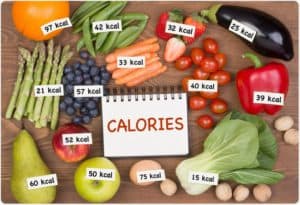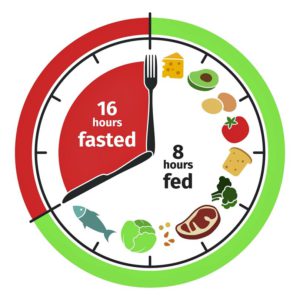A strict diet protocol of low calories or low carbohydrates can be hard on the body and the spirit,
especially over a long time. It can become difficult at times to keep the carb cravings at bay. Due to which people often end up cheating and deviating from the diet. For high-level nutrition programs, one solution to this dilemma is carb cycling. This article will help to explore what carb cycling is, how it works, and its benefits.
What Is Carb Cycling?
Most simply, it is an arranged alteration of carbohydrate consumption to prevent a fat loss plateau and keep up metabolism with exercise performance. It is viewed as an aggressive and significant nutritional methodology. Only individuals, (for example, athletes and highly active individuals) whose nutritional adherence is incredibly high, and who require a meticulous nourishing approach, should utilize it.
It is intended for transitory use. It\’s not the correct approach for long term fat loss. In certainty, whenever utilized for a long time it might be troublesome.
How Does It Work?
On days when you\’re working out too hard at the gym or preparing yourself for a competitive event or preparing for a race, carbs are your BFF. Your body consumes them (alongside fat) for energy rather than protein. That permits the muscle-driving nutrient (protein) to use for the activity.
However, on days when you don\’t leave the couch, eating extra carbohydrates could urge your body to store that unused glucose in your fat cells. By eating fewer amounts of these on a rest day, your body goes to fat for energy rather than the sugar and starchy foods that make the most of what you eat.
Can Carb Cycling Help With Weight Loss?
For those occasions when you\’re takings rest and habitually lazy, there are positive weight reduction benefits to consuming fewer carbs. Don\’t accumulate all these additional calories if they\’re not going to be used. Unlike your fat and protein intake, your carbohydrate needs to shift starting with one day then onto the next.
Additionally, when you trade it for protein and veggies, it gets trickier to gorge (a large portion of us try not to gorge on broccoli and chicken. This is due to the reason that veggies are rich in fiber that gives the feeling of fullness, in contradiction to carbohydrates. It will in turn help you with the goal that helps your waistline.
Is It Safe?
You can experience a few symptoms when you cut back on the carbs initially. Such as:
- Sleep problems
- Tiredness
- ConstipationBloating
- Mood issues
This is classified as \”keto flu,\” and it does not last very long. Drinking water and electrolytes can help. Since it is aggressive and stringent, utilize it for a short time, and it\’s not directly for everybody.
You shouldn\’t attempt it on it if you are:
- Pregnant or breastfeeding
- Underweight
- Managing or have a background marked by an eating disorder
Try not to attempt it if you have adrenal issues, either. If all else fails, check in with your doctor first before you start.
How To Try Carb Cycling?
If you think it may be right for you, here is how to begin. To start with, you just need to follow your macros using an application or food journal. Next, you\’ll need to figure out how many net carbs to eat every day. This is profoundly different for every individual. There are a few variables that come into consideration while figuring what amount of carbohydrate to eat, for example, body weight, age, sex, level of physical activity, as well as listening to your body and hunger cues.
Yet, there are some broad rules you can use to figure out the beginning stage. On high-carb days, people regularly consume around 60 percent of their calories from complex carbohydrates. On low-carb days, people will alternate their portion for healthy fats and protein.
Another choice is to utilize your low-carb days as a beginning stage to calculate your medium and high carb days. If you consider that 50 grams every day is what is commonly expected to arrive at ketosis ( where the body uses fat as a source of energy), you could begin there. Work your way up from that point and maximize at 200 grams per day.
So your week might look like this:
Day 1: 50 grams
Day 2: 100 grams
Day 3: 150 grams
Day 4: 200 grams
Day 5: 125 grams
Day 4 would be your most intensive preparing day (aggressive weightlifting, HIIT, or a long run), and day 1 would be your least intensive day (light cardio, portability work, or a rest day). At that point, you would cycle back to day 1.
Concerning how to manage the remaining calories, you have two or three alternatives. You can keep your protein and fat intake the same and just change the number of carbs you eat daily. Try to coordinate high-carb days with extreme exercise days, that way you get the lift in energy you require for your exercises from the extra carbohydrates.
Another alternative? Keep protein the same, rather change fat at the point when you change carbs. So if its intake goes up, fat intake goes down to make up for the move in calories. This might be a better decision for those attempting to get more fit or lose weight and body fat.
Overview
Carb cycling implies you eat a higher amount of carbohydrates in one day, followed by a lower amount of it the following. You keep on switching back and forth between the two consistently, based upon your activity levels every day. At the point when you work out, your body stores glycogen for energy, so normally your high carb days would line up with preparing days when your body can best use that fuel.
The method of reasoning behind it is really strong: you get the advantages of going high-carb during the days you work out and the advantages of going low-carb when you\’re not as active.
This is as easy as it gets, so what is your excuse now? Get yourself started today and Stay tuned for more such keto weight loss journeys, health content, and recipes! Also, don’t forget to follow us on Instagram for the daily dose of the Keto Lifestyle!












